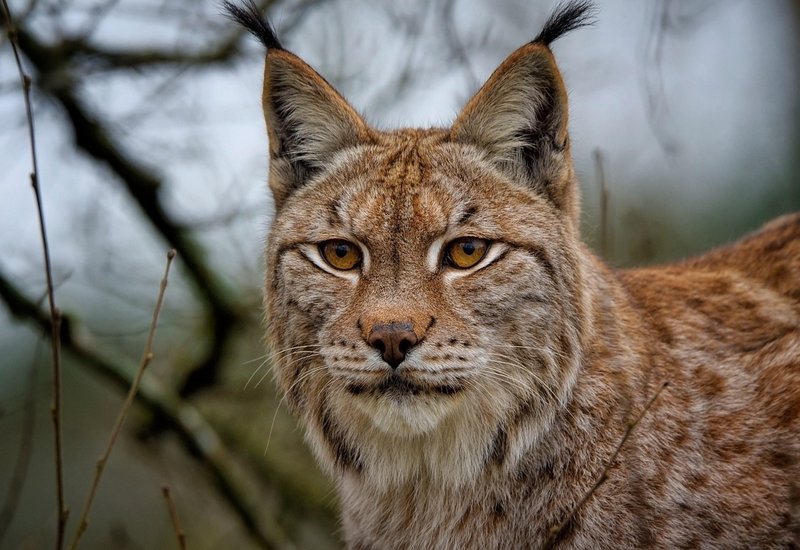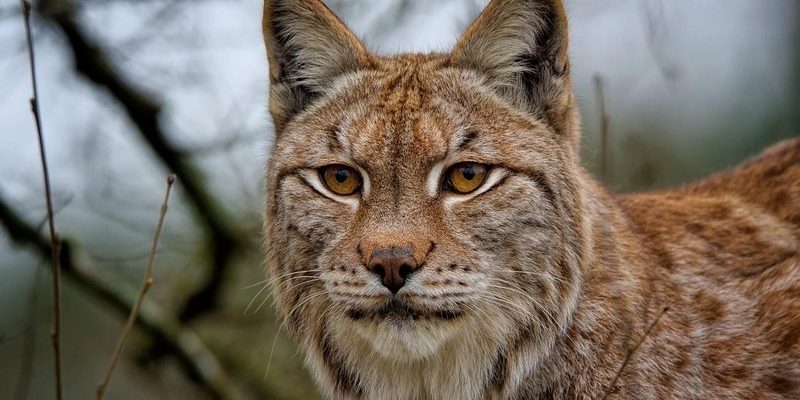
The Eurasian lynx is a unique part of the lynx family, known for its tufted ears, striking markings, and secretive nature. These cats thrive in a variety of habitats, from snowy mountain ranges to dense forests. But despite their elusive existence, they’ve become the subject of many misunderstandings. In this article, we’ll dive into some of the most common myths about the Eurasian lynx and shed light on what truly makes this animal special.
Myth 1: Eurasian Lynx Are Dangerous to Humans
You might hear someone say that the Eurasian lynx is a fearsome predator that poses a real threat to people. Here’s the thing: while they are strong and capable hunters, they rarely have any interest in humans. These cats tend to be very shy and elusive, often steering clear of human populations.
In fact, an encounter with a Eurasian lynx is a rare occurrence. They primarily prey on small to medium-sized animals, like hares and rodents, rather than seeking out larger game, including humans. Their natural instincts keep them hidden, preferring to hunt during dusk or dawn when they feel safest.
Think about it like this: if you lived in a bustling city, would you want to hang out in the crowd, or would you prefer to find a cozy spot away from the noise? The Eurasian lynx chooses the latter, making it safe for people and preserving its wildness.
Myth 2: They’re Just Big Housecats
Another common myth is treating the Eurasian lynx like a big housecat. Sure, they share some similarities, like whiskers and a love for cozy napping spots, but that’s where the comparisons end. Eurasian lynx are much more adaptable and have a range of physical and behavioral differences.
For starters, these lynxes are built for survival in the wild. They have longer legs and larger paws compared to domestic cats, which help them navigate through snow and rough terrain. Plus, their fur is thicker, allowing them to stay warm in chilly climates.
Let’s not forget about their hunting skills. While housecats might chase a feather toy, the Eurasian lynx uses stealth and power to take down prey much larger than itself. So, while they might look cute and cuddly, they embody the wild spirit of the forest.
Myth 3: Eurasian Lynxes Can’t Survive in Urban Areas
You might be surprised to hear that some Eurasian lynxes have learned to adapt to urban environments. Contrary to the belief that these wild cats can only thrive in deep forests or remote mountains, they can be surprisingly flexible.
In places where their natural habitat overlaps with cities, they’ve found ways to coexist. They often use green spaces and parks as hunting grounds. Think of it as a clever city dweller finding the best coffee spots amidst the hustle and bustle.
Of course, urban life isn’t without its challenges for the lynx. Traffic, pollution, and habitat loss can be significant hurdles. Still, their ability to adapt showcases their resilience and determination. It’s a reminder that these incredible animals can carve out a niche in unexpected places.
Myth 4: Eurasian Lynxes are Solitary Forever
It’s true that Eurasian lynxes are primarily solitary animals, but that doesn’t mean they don’t enjoy the company of others—especially during mating season. You might think they go through life alone, but when the time is right, they actively seek out mates.
During the breeding season, which typically occurs from February to March, males and females come together for a short time. After this period, they part ways, returning to their independent lifestyles.
Additionally, mother lynxes are very nurturing. They’ll care for their kittens for several months, teaching them the ropes of hunting and survival. This nurturing phase is a crucial part of their life cycle, showcasing the importance of relationships during certain periods.
Myth 5: They’re Not Important to Their Ecosystem
Some people underestimate the role that Eurasian lynxes play in their ecosystem. These cats are apex predators, which means they sit at the top of the food chain and help to keep populations of smaller mammals in check. Without them, we could see an overabundance of certain species, leading to ecological imbalances.
By hunting herbivores like hares, lynxes help maintain healthy vegetation levels. This balance allows various plant species to thrive, supporting the entire food web. So, when you think about the environment, consider the lynx as a key player in maintaining harmony.
It’s like having a great conductor in an orchestra—without them, the music can become chaotic and disorganized. Their presence ensures a well-functioning ecosystem, benefiting all life forms.
Myth 6: They’re the Same as Other Lynx Species
While it’s easy to lump the Eurasian lynx in with other lynx species, such as the Canada lynx or the Iberian lynx, each one has unique traits and adaptations. Let me explain: think of lynxes like different styles of pizza. They might share a common foundation (the crust), but the toppings, flavors, and even cooking style can vary widely.
For example, the Eurasian lynx tends to be larger than the Canada lynx and has a different range: it spans across Europe and Asia. The Iberian lynx, on the other hand, is much more endangered and is mainly found in specific parts of Spain and Portugal. Each species has adapted to its environment, resulting in unique behaviors and survival strategies.
Understanding these differences is crucial, especially for conservation efforts. Protecting each species means recognizing their specific needs and habitats.
Myth 7: Eurasian Lynxes Don’t Need Conservation Efforts
Some people believe that because the Eurasian lynx is widespread, it doesn’t need conservation efforts. This couldn’t be further from the truth. While their populations are stable in some regions, they face threats like habitat destruction, climate change, and poaching.
Conservation programs are essential to ensure that they continue to thrive in the wild. These efforts often focus on habitat preservation and creating wildlife corridors so lynxes can roam freely between areas without facing human interference.
Just like we invest in future generations, we need to invest in the survival of these magnificent creatures. Every species plays a role in the greater ecosystem, and losing even one can have ripple effects.
The myths surrounding the Eurasian lynx can create a confusing picture of this remarkable animal. From being seen as dangerous to being misunderstood as a big housecat, it’s clear that these wild felines deserve a closer look. They show us how adaptable and resilient nature can be, all while playing a crucial role in their ecosystems.
By debunking these common misconceptions, we can foster a better understanding and appreciation for these elusive cats. Whether they’re hunting in the quiet shadows of the forest or adapting to urban sprawl, the Eurasian lynx continues to be a symbol of wildlife’s beauty and complexity. So next time you hear a myth, remember the truth—there’s so much to learn about this intriguing creature!

